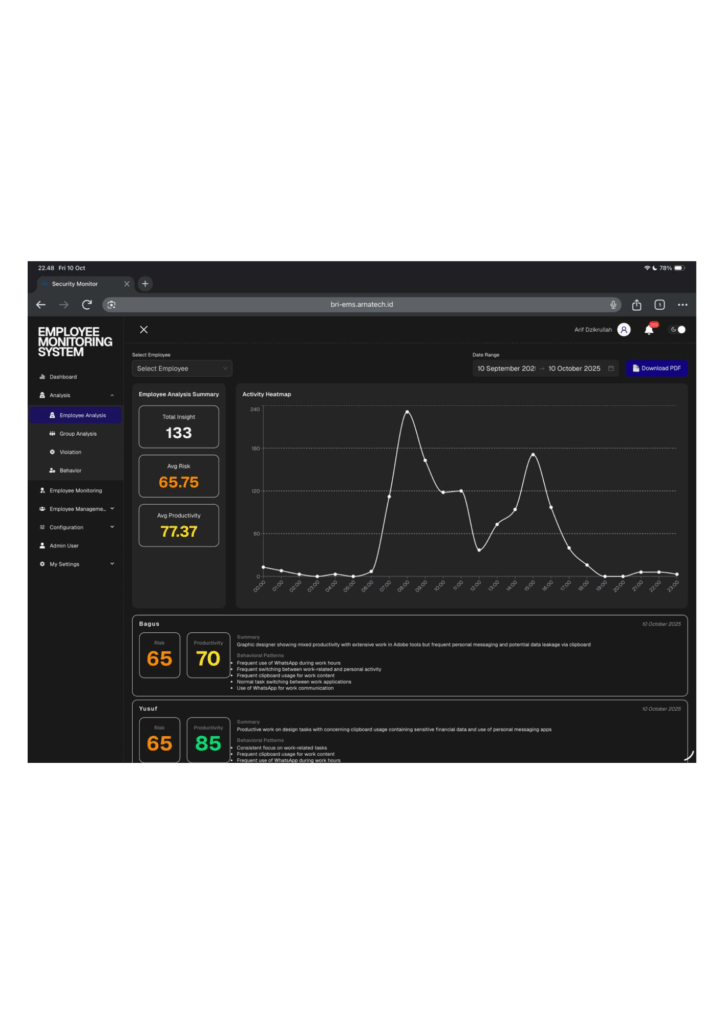In every organization, productivity is the engine that drives growth. But productivity loss rarely happens overnight it builds quietly through inefficiencies, distractions, and blind spots in operations. By the time numbers drop, deadlines slip, or morale declines, it’s often too late for a quick recovery.
In today’s fast-paced digital environment, relying on manual reporting or traditional oversight simply isn’t enough. Businesses need systems that can see beyond surface-level data, recognize behavioral patterns, and prevent disruptions before they affect outcomes.
That’s where smart monitoring plays a critical role.
From Tracking to Anticipation: The Evolution of Monitoring
Traditional monitoring was designed for observation measuring attendance, task completion, or basic output metrics. It provided visibility, but not understanding.
Smart monitoring, powered by AI and data analytics, changes that dynamic entirely. It’s no longer about watching it’s about anticipating.
By integrating automation, behavioral analytics, and real-time dashboards, smart monitoring tools detect performance fluctuations and unusual activity patterns early. They turn scattered operational data into a cohesive view of how people, processes, and systems actually perform.
Instead of asking “What went wrong?”, leaders can now ask, “What might go wrong next — and how can we prevent it?”
The Power of Predictive Insight
A truly smart monitoring system operates at the intersection of data, behavior, and performance. It collects and correlates data from multiple sources task reports, system usage, communication tools, and even workflow timing to identify emerging risks.
For example:
- A sudden drop in task completion across one department might indicate burnout or resource misalignment.
- A spike in idle time on key systems could point to workflow inefficiencies or unclear priorities.
- Repeated log-in irregularities might signal security gaps or access misuse.
Instead of waiting for a quarterly performance review to reveal these problems, smart monitoring provides early warnings through visual dashboards and automated alerts.
This proactive approach allows management to intervene promptly offering guidance, rebalancing workloads, or optimizing processes before productivity loss spreads across the organization.
Visibility Without Micromanagement
One common misconception about monitoring systems is that they’re tools for control. But smart monitoring when designed with ethics and transparency does the opposite.
It creates clarity without micromanagement.
When employees understand that monitoring aims to improve efficiency and protect their time, not invade privacy, it fosters a culture of accountability and shared ownership.
Arnatech’s AI-Powered Employee Monitoring System (EMS+) is built around this principle. It offers real-time dashboards that visualize performance metrics across teams while maintaining a focus on transparency, fairness, and trust.
The system enables leaders to see trends not individuals helping them make informed, data-backed decisions that benefit the entire organization.

Turning Data into Decisions
Consider a financial institution facing declining productivity in its digital innovation division. Traditional metrics didn’t show the full picture reports were delayed, and feedback loops were fragmented.
By deploying a smart monitoring solution like EMS+, the company gained real-time visibility into workflow bottlenecks. It identified that repetitive administrative tasks were taking up 35% of productive hours. Within weeks, automation was introduced, communication channels were streamlined, and project efficiency rose by over 20%.
The key insight? You can’t fix what you can’t see.
And smart monitoring helps you see clearly before the problem grows.
Strategic Advantages of Smart Monitoring
Smart monitoring systems provide benefits that extend far beyond tracking performance. They enable business to:
- Predict and prevent downtime — Detect inefficiencies and performance drops early.
- Optimize workflows dynamically — Adjust resources in real-time based on data trends.
- Enhance employee engagement — Offer support and training before burnout occurs.
- Ensure operational continuity — Minimize risk from miscommunication or system failures.
- Improve decision-making — Provide leadership with concrete data for every strategy discussion.
When implemented correctly, these systems transform productivity management from a reactive discipline into a predictive science.
